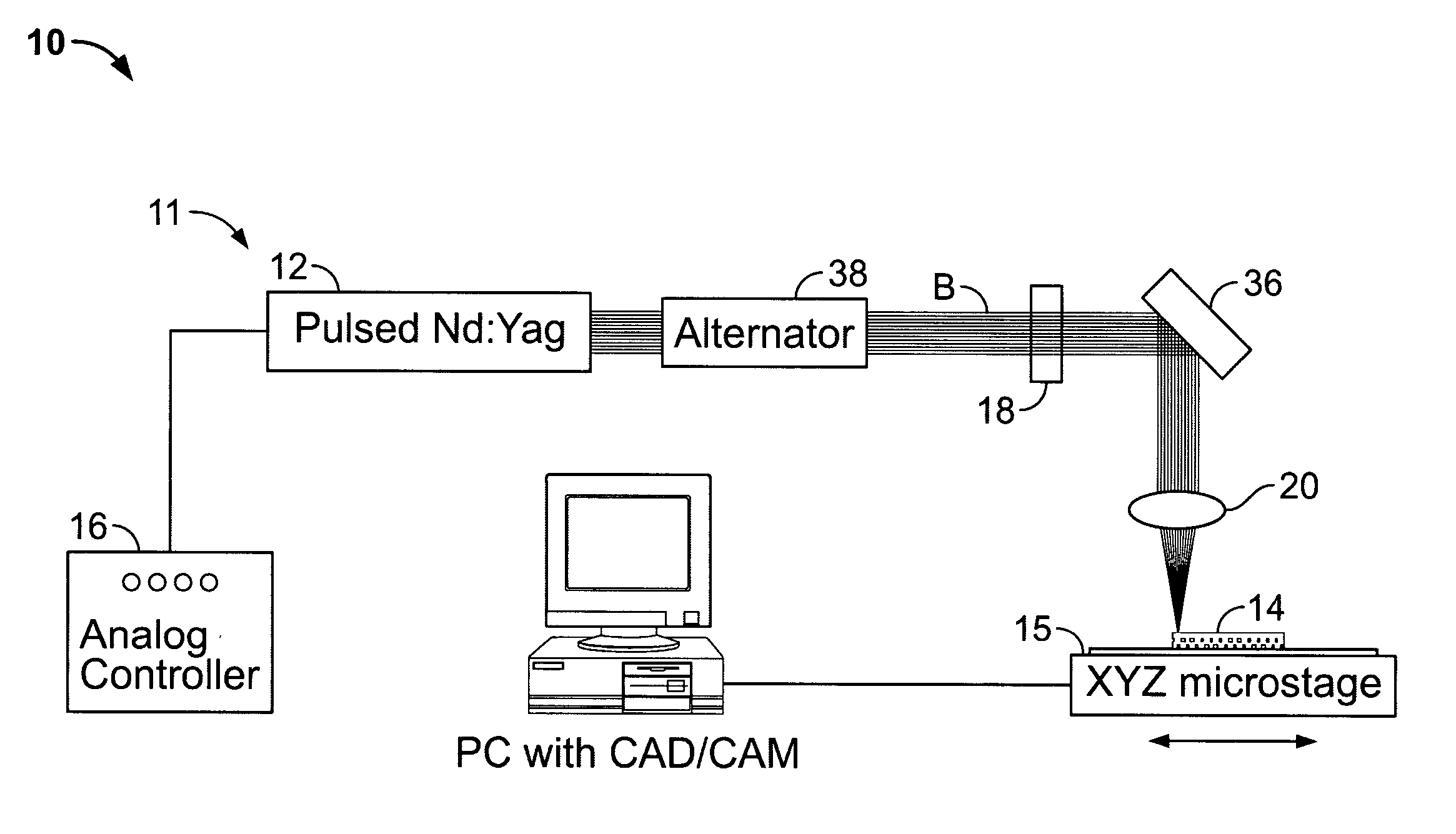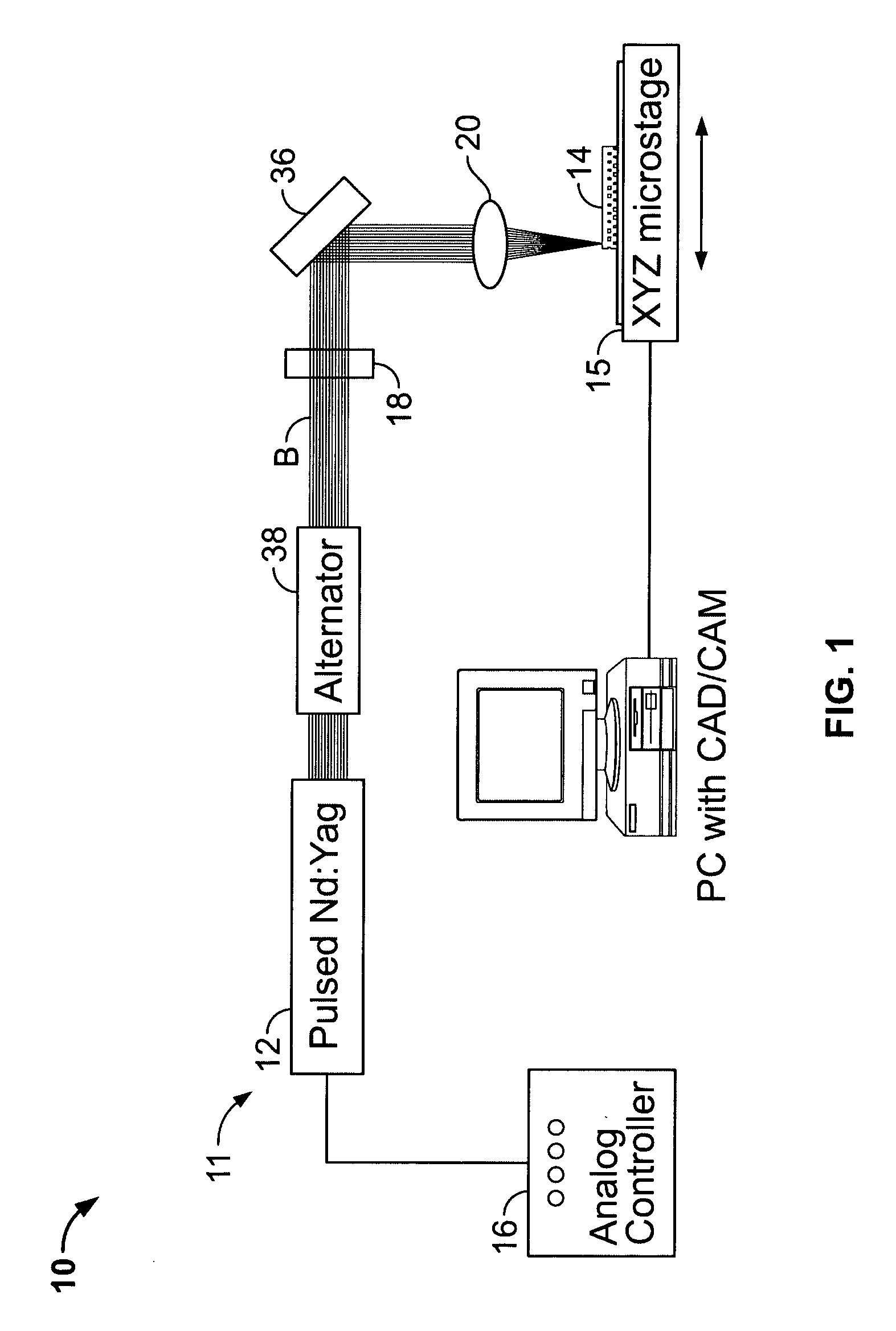UV pulsed laser machining apparatus and method
a laser machining and pulsed technology, applied in laser beam welding apparatus, manufacturing tools, welding/soldering/cutting articles, etc., can solve the problems of high tooling cost, small internal circles and other intricate features, and inability to easily substitute less robust materials for polycarbonate faceplates, etc., to achieve the effect of maximizing cutting quality
- Summary
- Abstract
- Description
- Claims
- Application Information
AI Technical Summary
Benefits of technology
Problems solved by technology
Method used
Image
Examples
examples-parameters
[0074] Several experiments were performed to determine the preferred parameters of the laser ablation process. Initially, the iris 38 was set to a theoretical desired diameter. An effective diameter of 5 mm can be used, but a 3.5 mm diameter was preferred. A 3.5 mm iris was found to produce a high quality beam that allows the focus position along the Z axis to be more easily found and adjusted than other diameters. Furthermore, by decreasing the iris diameter the most uniform and strongest portion of the beam can be captured and directly used in the processing operation. The 3.5 mm diameter iris assisted in developing a high quality beam. Most generally, and as understood in the art, a smaller iris can operate to block the less uniform outer edges of the normally distributed beam, leaving the center, higher energy portion of the beam to impinge upon the substrate.
[0075] In order to initiate the laser system 10, the laser 12 is activated, and the beam is conditioned by adjusting the...
PUM
| Property | Measurement | Unit |
|---|---|---|
| Length | aaaaa | aaaaa |
| Length | aaaaa | aaaaa |
| Fraction | aaaaa | aaaaa |
Abstract
Description
Claims
Application Information
 Login to View More
Login to View More - R&D
- Intellectual Property
- Life Sciences
- Materials
- Tech Scout
- Unparalleled Data Quality
- Higher Quality Content
- 60% Fewer Hallucinations
Browse by: Latest US Patents, China's latest patents, Technical Efficacy Thesaurus, Application Domain, Technology Topic, Popular Technical Reports.
© 2025 PatSnap. All rights reserved.Legal|Privacy policy|Modern Slavery Act Transparency Statement|Sitemap|About US| Contact US: help@patsnap.com



